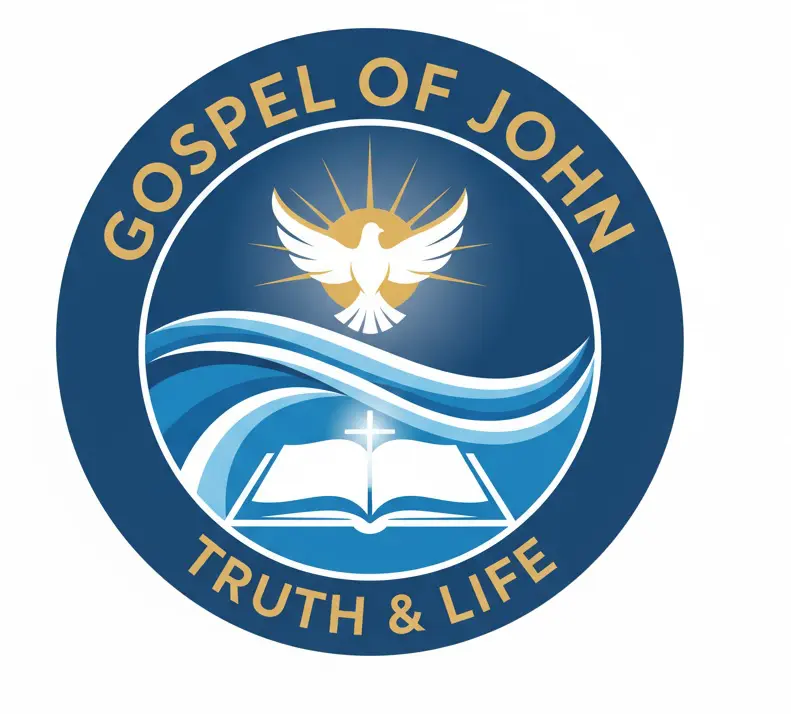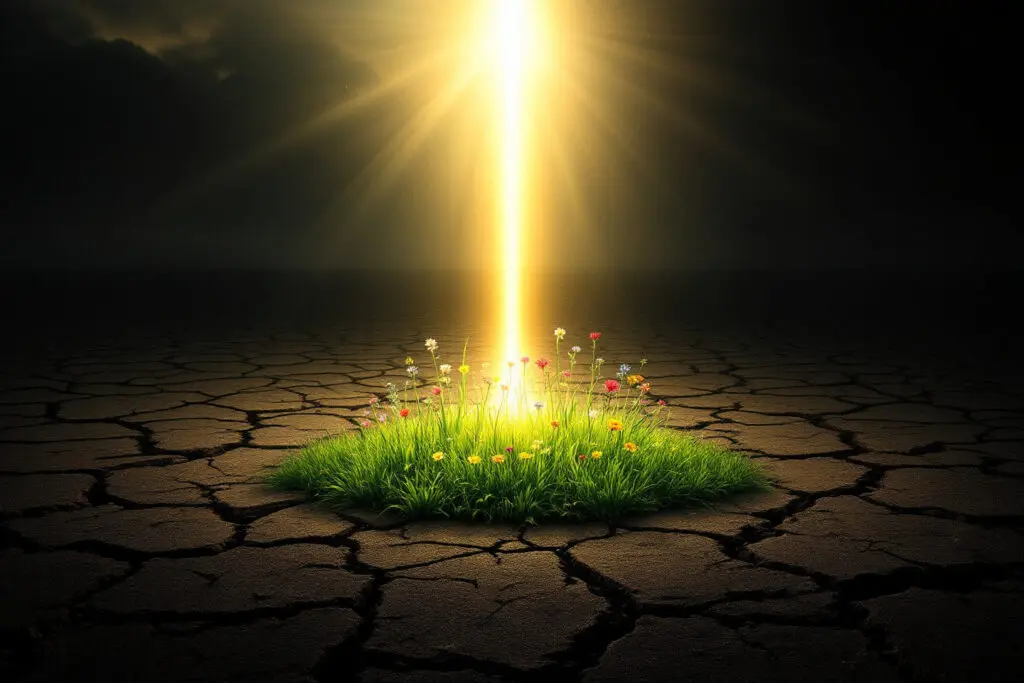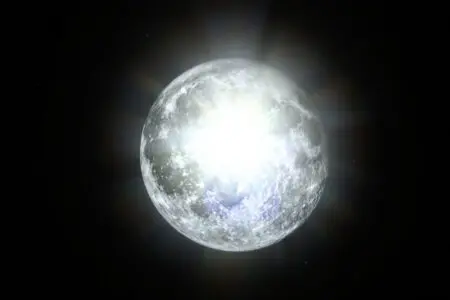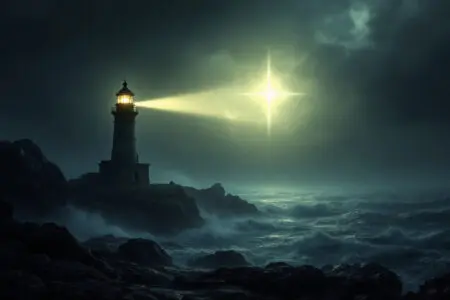There are moments that sear themselves into your memory, not because of what happened, but because of what you saw. For me, one of those moments was standing on a remote mountainside in Colorado, hours before sunrise. The darkness was absolute. It was a thick, inky blackness that felt like a physical weight.
You couldn’t see your hand in front of your face. Then, the first hint of dawn appeared. It wasn’t a floodlight; it was a fragile, gray line on the horizon. But that tiny sliver of light changed everything. It didn’t just push back the darkness; it gave shape to the mountains, definition to the trees, and hope to the cold, waiting world. It revealed what was already there. That memory always comes to mind when I read the fourth verse of John’s gospel.
It’s a verse of stunning simplicity and cosmic depth: “In him was life, and that life was the light of men.” That single sentence feels like the dawn, revealing the entire landscape of reality. It’s a cornerstone of the Christian faith, but we can hear it so often we forget to feel its weight. This isn’t just poetry. It’s a massive theological claim with real-world implications for every one of us. To get it, we need to go deeper than a surface reading. This article is a complete John 1:4 explained, designed to help us see the full panorama that John unveils in these few, powerful words.
More in John Chapter 1 Category
Key Takeaways
- The Source of Life: John 1:4 declares that Jesus is not just a giver of life but the very source of life itself. The life is inherent in Him.
- A Different Kind of Life: The Greek word used for “life” is Zoe, which signifies eternal, uncreated, spiritual life—the very life of God—not just biological existence (Bios).
- Life as Light: The verse inextricably links life and light. The experience of this divine Zoe life is what brings spiritual illumination, understanding, and moral clarity to humanity.
- Pushing Back the Darkness: This “light of men” shines into the darkness of sin, ignorance, and hopelessness, offering truth, purpose, and a way back to God.
- A Foundational Claim: This statement is one of John’s earliest and clearest claims for the divinity of Jesus Christ, setting the stage for the rest of his Gospel.
What Does It Mean That “In Him Was Life”?
The verse starts with a massive claim. It doesn’t say He brought life or showed the way to life. It says that life was in Him. It was woven into His very nature, His essence. This isn’t life as a possession; it’s life as an identity.
Think of it this way. The sun doesn’t have light; the sun is light. You can’t separate the two. In the same way, John argues, you can’t separate Jesus from life itself. He is its origin, its substance, and its sustainer. This idea is everything if you want to understand who John believes Jesus to be. He isn’t just another prophet in a long line of teachers. He is utterly unique. He is the fountainhead from which all true life flows.
Was This Just Physical Life John Was Talking About?
This is a crucial question, and the original Greek language gives us a powerful answer. The New Testament has two primary words for life: Bios and Zoe. Bios refers to our biological existence—the sequence of our days, our physical functioning, the thing that a doctor can measure with a heartbeat. It’s where we get words like “biology.”
But John uses the word Zoe.
Zoe means something else entirely. It refers to uncreated, eternal, spiritual life. It’s the life that God possesses. It’s life in its absolute sense—life that has no beginning and no end. So when John says, “In him was Zoe,” he is making a staggering claim. He’s saying that the very life-force of God, the eternal reality that undergirds all of existence, was resident in Jesus.
I remember my freshman year of college. I was, by all accounts, full of Bios. I was on the track team, pulling all-nighters to study, chasing ambitions, and living a full social life. My heart was beating, my lungs were breathing, and my future seemed bright. I was physically alive. Yet, deep down, there was a hollowness, a persistent, nagging sense that something was fundamentally missing. I had plenty of existence, but no real meaning. I had Bios, but I was spiritually dead. I was living in a black-and-white world, completely unaware that color even existed. That’s the difference John is talking about.
So, Jesus is the Source of This Life?
Exactly. The phrasing “In him was life” points to Jesus as the original, uncreated source. He isn’t just a channel or a pipeline for life that comes from somewhere else. He is the wellspring. This flips our whole understanding of life on its head. We receive life. We are dependent on food, water, air, and ultimately, on God for our existence. Our life is derivative.
John’s gospel presents Jesus’s life as inherent. It’s His own. This is why, later in the Gospel, Jesus can say, “I am the resurrection and the life (Zoe)” (John 11:25) and “I am the way and the truth and the life (Zoe)” (John 14:6). He’s not just pointing to a concept; He’s pointing to Himself. He’s claiming to be the very thing our souls are searching for. This fundamental truth—that Jesus is the source, not just a guide—is what makes the Christian faith more than a moral philosophy. It’s an invitation to receive a new kind of life from its only possible source.
How Does This “Life” Become “the Light of Men”?
The second half of the verse builds directly on the first: “…and that life was the light of men.” John isn’t switching topics; he’s showing a cause-and-effect relationship. The Zoe life that is in Jesus is the very thing that functions as light for all humanity. It’s not that He has life and He also has light. The life is the light. They are two sides of the same coin. The moment that divine life touches a human soul, it illuminates. It brings understanding, reveals truth, and exposes falsehood. It’s the “aha!” moment of the soul.
Are Life and Light Two Different Things?
In John’s thinking, they are inseparable. The experience of divine life is what produces illumination. Imagine being in a pitch-black, unfamiliar room. You are “alive” in the Bios sense, but you are functionally blind. You stumble around, bumping into furniture, unable to make sense of your surroundings. Your great need is for light.
Now, imagine someone flips a switch. In an instant, the light floods the room. You can see the layout, the obstacles, the colors, the exit. The light has given you understanding, perspective, and a path forward. That is what John is saying the Zoe life of Jesus does for the human soul. It “flips the switch.” It doesn’t just give us a set of rules to follow in the dark; it floods our inner world with light so we can finally see things as they really are: God, ourselves, and the world around us.
What Kind of Darkness is This Light Piercing?
When John speaks of “darkness,” he’s not just talking about a lack of information. He means moral and spiritual darkness. It’s the darkness of a world alienated from its creator. It’s the confusion of not knowing why we’re here or where we’re going. It’s the bondage of sin, the shadow of guilt, and the fear of death.
- The Darkness of Ignorance: We are born spiritually ignorant, not knowing God’s true character. The light of Christ reveals Him as a loving Father.
- The Darkness of Sin: We stumble in moral darkness, often choosing what is harmful without fully understanding why. The light exposes the destructive nature of sin and reveals a path to righteousness.
- The Darkness of Hopelessness: A life without God is ultimately a life without ultimate meaning or hope. The light reveals our true purpose and the promise of an eternal future.
This is the darkness the light invades. And as John says in the very next verse, this light is resilient. “The light shines in the darkness, and the darkness has not overcome it” (John 1:5). The darkness can’t comprehend it, extinguish it, or defeat it. It is a persistent, triumphant light.
What’s the Big Deal About John’s Choice of Words?
Every word in the opening of John’s Gospel is meticulously chosen, loaded with meaning for both his Jewish and Greco-Roman audiences. He’s building a case, layer by layer, for the supreme identity of Jesus Christ. Understanding a few of his key terms, like Logos, Zoe, and Phos, unlocks the incredible depth of his message. To modern readers, some of this nuance can be lost, but for his original audience, these words were explosive.
Why Did John Use the Word “Logos” Right Before This?
John 1:4 doesn’t exist in a vacuum. It follows three verses that introduce Jesus as the Logos (translated as “Word”). “In the beginning was the Word, and the Word was with God, and the Word was God.” This concept was profoundly powerful.
For his Jewish readers, the “Word of the Lord” was an active, creative force. It was the Word of God that spoke the universe into existence in Genesis. It was the Word that came to the prophets. By calling Jesus the Logos, John was identifying Him with the very power and person of God in action.
For his Greek audience, the Logos was the unifying principle of reason and order in the cosmos. It was the divine intelligence that held everything together.
So, when John gets to verse 4, his readers have already understood that this “Him” is the divine, eternal Logos—the agent of creation and the mind behind the universe. Therefore, the statement “In Him was life” isn’t just about a man. It’s about the Creator of the universe. The source of all cosmic order is also the source of all personal, spiritual life.
Let’s Dig Deeper into “Life” (Zoe) and “Light” (Phos)
We’ve already touched on Zoe, but it’s worth re-emphasizing. It is God’s life. It is eternal in duration, but more importantly, it is a different quality of existence. It is a life that is truly alive, vibrant, and connected to its source. It is the only antidote to spiritual death.
The Greek word for “light” here is Phos. Like Zoe, it means more than its physical counterpart. It signifies spiritual and moral illumination. It represents truth in contrast to falsehood, purity in contrast to corruption, and reality in contrast to illusion. In the Bible, God is consistently associated with light. First John 1:5 says, “God is light; in him there is no darkness at all.”
By saying the Zoe in Jesus was the Phos of men, John is making another radical claim about Jesus’s divinity. He is the embodiment of God’s own life, and therefore He is the embodiment of God’s own truth and purity. He doesn’t just teach the truth; He is the Truth (John 14:6).
How Does This Verse Impact My Life Today?
This is where theology gets personal. John 1:4 isn’t a dusty theological relic for scholars to debate. It’s a living, breathing reality that is meant to be experienced. It’s an open invitation out of the darkness and into a completely new way of being. This verse answers the deepest questions of the human heart: Can I be truly alive? Can I find my way in the dark? John’s answer is a resounding yes, but the path is not a philosophy or a program. It’s a person.
Can I Experience This Life and Light Personally?
Yes. In fact, that is the entire point of John’s Gospel. He wrote it, in his own words, “so that you may believe that Jesus is the Messiah, the Son of God, and that by believing you may have life (Zoe) in his name” (John 20:31). This isn’t something we achieve; it’s something we receive.
For years, I treated Christianity like a puzzle to be solved. I read the books, learned the doctrines, and understood the concepts. I could have probably passed a seminary exam on the meaning of Zoe. But my heart was still dark. The information in my head had not become illumination in my soul. Then, one night in my dorm room, overwhelmed by that same hollowness I felt in college, I stopped analyzing and started surrendering. I admitted my own spiritual darkness and asked for the life that was in Jesus to become the light in me.
It wasn’t a lightning strike. There was no audible voice. But in the quiet of that room, a light came on. For the first time, the words I had read felt real. The darkness of my confusion and aimlessness didn’t vanish, but it was pierced by a pinpoint of light called hope. That hope had a name. This is what Jesus called being “born again” (John 3:3). It’s the personal reception of this Zoe life, which then becomes our inner light.
What Does It Look Like to “Walk in the Light”?
Receiving the light is the beginning of a new journey: learning to walk in it. John addresses this in his first letter: “But if we walk in the light, as he is in the light, we have fellowship with one another, and the blood of Jesus, his Son, purifies us from all sin” (1 John 1:7). Walking in the light is a daily choice to live in the sphere of God’s truth and presence. It means:
- Living Honestly: It involves being honest with God, ourselves, and others about our failures and struggles. We stop pretending to have it all together.
- Seeking Truth: It means orienting our lives around the truth revealed in Scripture, allowing it to guide our thoughts and decisions.
- Embracing Fellowship: Light connects us. It pulls us out of the isolation of our own darkness and into authentic community with others who are on the same journey.
- Constant Course-Correction: Walking in the light isn’t about perfection. It’s about staying turned toward the source of light, so that when we stumble, His light exposes it, and we can be cleansed and get back on the path.
How Can This Light Guide My Decisions?
The light of Christ provides a moral compass and a source of wisdom that transcends human reasoning. When we are faced with decisions, big or small, the question is no longer just “What is most profitable?” or “What is easiest?” Instead, we can ask, “Which path aligns with the light?”
This light offers clarity in a world of gray ambiguity. It helps us discern between truth and deception, wisdom and foolishness, love and selfishness. This isn’t always easy, and it doesn’t mean we’ll have every answer. But it means we’re no longer navigating with a faulty map in the dark. We have a true North. We have an internal guide—the Holy Spirit, who is the very presence of Christ’s life in us—illuminating the way.
Why is This Such a Foundational Belief for Christians?
John 1:4 is not a minor detail. It’s part of the bedrock. The claims it makes about Jesus are so exclusive and so total that they define the very character of Christianity. Without this truth, the faith would be a moral system, not a new life. It would be about human effort, not divine rescue. Everything hinges on this verse. It tells us that Jesus isn’t just helpful; He is essential.
Does This Verse Point to Jesus’s Divinity?
Unquestionably. This is one of the clearest and most profound declarations of Jesus’s divinity in the entire Bible. The statement “In him was life” asserts that He possesses an attribute that belongs to God alone. The Old Testament is clear that God is the “fountain of life” (Psalm 36:9). For John to assign this quality to Jesus is to place Him on the same level as God the Father.
This verse sets the stage for the rest of the Gospel, where Jesus will make a series of “I AM” statements that echo God’s own name (“I AM WHO I AM” in Exodus 3:14). When Jesus says, “I am the light of the world,” He is simply expanding on the truth John established here. As explained by scholars at institutions like Dallas Theological Seminary, the use of Logos in conjunction with Zoe and Phos builds an irrefutable case for the divine nature of Christ. He is not a created being who was given life; He is the uncreated God in whom life resides.
How Does This Connect to the Rest of the Bible?
The dual themes of life and light are woven through the entire biblical narrative, from the first chapter to the last. John 1:4 acts like a prism, gathering all these threads into one brilliant focal point in the person of Jesus.
- Genesis: The story begins with darkness, and God’s first creative act is, “Let there be light” (Genesis 1:3). He separates light from darkness, establishing a fundamental pattern.
- Psalms: The psalmist declares, “For with you is the fountain of life; in your light we see light” (Psalm 36:9). This Old Testament cry finds its ultimate fulfillment in Jesus.
- Proverbs: Wisdom is described as a light for our path. “For this command is a lamp, this teaching is a light” (Proverbs 6:23). Jesus is the embodiment of divine wisdom.
- Isaiah: The prophet foresaw a day when the Messiah would be “a light for the Gentiles” (Isaiah 42:6), bringing salvation to the ends of the earth.
- Revelation: The biblical story culminates in a new creation where the darkness is gone forever. “There will be no more night. They will not need the light of a lamp or the light of the sun, for the Lord God will give them light” (Revelation 22:5). And the Lamb, Jesus, is the lamp of that new city.
John 1:4 stands as the central pillar in this grand story. In Jesus, the creative light of Genesis, the illuminating light of the Psalms, and the glorious light of Revelation all converge.
The Dawn of a New Reality
The truth of John 1:4 is not something you can simply agree with. It’s something you must step into. It’s an invitation to move from the shadows of mere existence into the brilliant reality of true life. “In him was life, and that life was the light of men.” It is the most audacious claim and the most beautiful promise. It declares that the answer to our deepest spiritual hunger and our most profound confusion is not a system, a religion, or a philosophy.
It is a person.
He is the source of the life we crave and the light we need. To know Him is to be truly alive and to finally see. That is the dawn that changes everything.
FAQ – John 1:4 Explained

How can individuals experience the life and light described in John 1:4 today?
People can experience this divine life and light by personal surrender to Jesus, trusting in Him as the source of eternal life, which brings spiritual illumination and moral guidance in daily life.
Why did John choose the words ‘Logos,’ ‘Zoe,’ and ‘Phos’ in his Gospel?
John used these words to emphasize Jesus’ divinity and divine nature: ‘Logos’ reveals His role as the eternal Word of God, ‘Zoe’ highlights His divine life, and ‘Phos’ signifies the light or truth He brings into darkness.
What does the term ‘Zoe’ mean in the context of John 1:4?
‘Zoe’ refers to uncreated, eternal, spiritual life—the very life of God—signifying a divine, ongoing existence that transcends biological life and highlights Jesus as the origin of this divine life.
What is the significance of John 1:4 in Christian belief?
John 1:4 is fundamental to Christian faith as it declares that Jesus is the source of life itself, possessing eternal and divine life, which is crucial for understanding His divinity and role in salvation.





